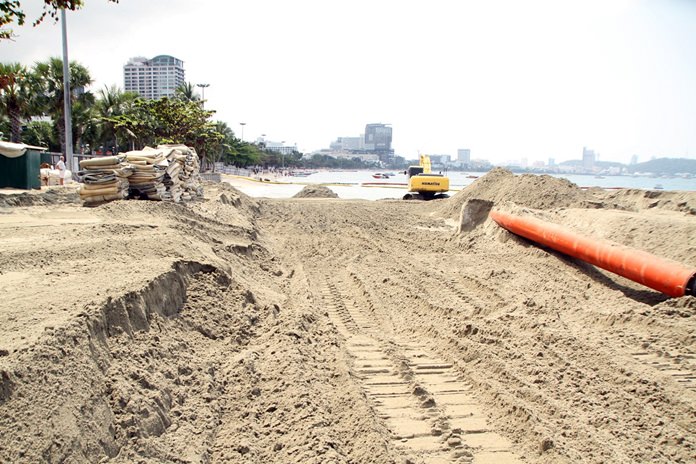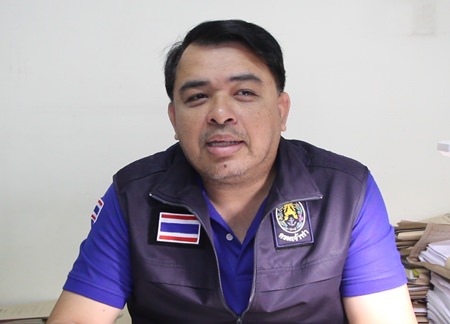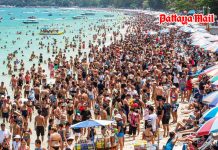
The on-again, mostly-off-again effort to stop erosion from wiping Pattaya Beach off the map is off again after Chulalongkorn University consultants, for the third time, bungled the job of finding the right sand.
 Restarted earlier this month after a 15-month suspension, the sand-refill project at the far northern end of Pattaya Beach was halted March 20 when the Marine Department decreed that the sand brought in from Koh Rang, a small island south of Koh Chang, doesn’t match Pattaya’s beachfront well enough.
Restarted earlier this month after a 15-month suspension, the sand-refill project at the far northern end of Pattaya Beach was halted March 20 when the Marine Department decreed that the sand brought in from Koh Rang, a small island south of Koh Chang, doesn’t match Pattaya’s beachfront well enough.
Marine Director Eakaraj Kantaro said no more of the Trat Province sand will be brought to Pattaya and the entire project will be sent back, once again, to consultants at Chulalongkorn University who twice before recommended the wrong sand.
Previous contractor Kijakarn Ruamka Marine Construction Co. restarted work on the 483-million-baht project – which has ballooned far over that first estimate due to the many stops, starts and new-contractor contracts – in October 2016 following a 13-month hiatus.
The work stopped on Dec. that year after beach users complained about the sand laid near the Dusit Thani Hotel.
Pattaya originally planned to bring sand from a Rayong estuary to an offshore barge in Pattaya, then use smaller equipment to bring the sand to shore and refill the beach and install supporting frames and breakwaters starting from the Dusit Curve southward.
Objections from Rayong provincial officials resulted in Pattaya not being able to obtain enough sand from that source, so it chose a section off of Koh Khram as a new source. However, that sand was found to not match Pattaya’s own sand well enough and a new source was needed.
The Royal Thai Navy also has objected to removing sand from the island it controls, the region’s main breeding ground for endangered Green and Hawksbill sea turtles.

Plans to rebuild Pattaya Beach began in 2011 when researchers from Chulalongkorn warned that the beach would disappear within five years if nothing was done to counter erosion. Yet despite the urgent warnings, funding for the project was repeatedly delayed.
Pattaya has sporadically performed stop-gap refill projects that only extended the beach’s life expectancy a few years.
In 2014, the lead consultant in Chulalongkorn’s Geology Department said that in 1952 Pattaya Beach covered 96,128 sq. meters and was, on average, 35.6 meters wide. By 2011, the beach had shrunk to as little as 3.5 meters. Today it is at most five meters wide.
But even seven years ago, researchers warned that a massive beach-refill project would not permanently solve the problem. Erosion has carried away about 10,000 cu. meters of sand a year. If that continues, more would be added in the next decade, he said.





